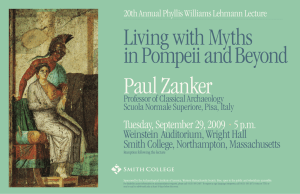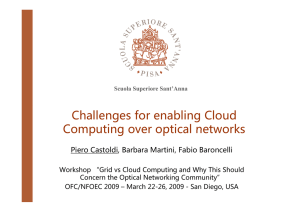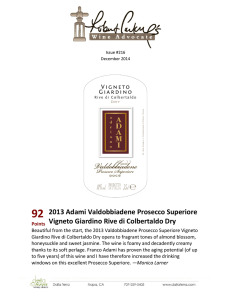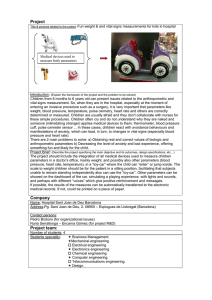InReTe Reducing Energy Consumption in Optical Access Networks Luca Valcarenghi
advertisement
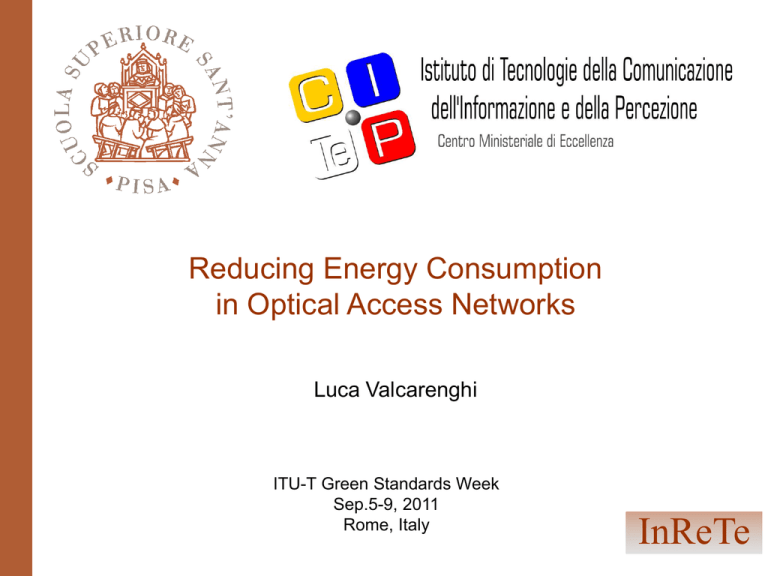
Reducing Energy Consumption in Optical Access Networks Luca Valcarenghi ITU-T Green Standards Week Sep.5-9, 2011 Rome, Italy InReTe Summary • Energy consumption in wired access networks • Energy consumption in optical access networks • Classification of methods to reduce optical access network energy consumption • Standard body initiatives to reduce energy consumption in optical access networks • Conclusions InReTe 2 © 2011 Scuola Superiore Sant’Anna Fixed Broadband Access Subscriptions Total fixed (wired) broadband subscriptions DSL 176.139.622 Cable Modem 90.017.631 Fibre + LAN 37.732.444 Other TOTAL Source: OECD 1.915.992 305.805.689 DSL: DSL lines offering Internet connectivity with download speeds ≥ 256 kbit/s Cable: Cable modem subscribers at download speeds ≥ 256 kbit/s Fibre: Fibre-to-the-premises (e.g., house, apartment) download speeds ≥ 256 kbit/s; fibre-to-the-building subscribers (e.g., Apartment LAN) using fibre-to-thebuilding but Ethernet to end-users. OECD Fixed (w ired) broadband subscriptions, by technology, Dec. 2010 Cable Modem 29,4% Fibre + LAN 12,3% DSL 57,6% InReTe Total subscribers: 305.6 million Source : OECD Other 0,6% 3 © 2011 Scuola Superiore Sant’Anna Energy Consumption in Communications Remaining part home networks Networks • Except home networks, access networks, together with mobile radio networks, are the major contributors to energy consumption in communications networks – Because of the high number of Customer Premises Equipments (CPE) – Because of the bandwidth underutilization Wired Networks Source: C. Lange, D. Kosiankowski, R. Weidmann, and A. Gladisch, “Energy Consumption of telecommunication networks and related improvement options”, IEEE JSTQE, March/April, 2011 InReTe Access=Fixed Access Network= Fiber to the Exchange (FTTE) and Fiber to the Cabinet (FTTC): fiber 4 + xDSL; FTTH (PON) © 2011 Scuola Superiore Sant’Anna Energy per bit of Optical Network Devices bandwidth underutilization InReTe Source: R. S. Tucker, “Energy Footprint of the Network”, OFC 2009 workshop ”Energy Footprint of ICT: Forecasts and Network Solutions” 5 © 2011 Scuola Superiore Sant’Anna Energy per bit per technology Per user access rate Technology Per user power consumption Technology [W] limit [Mb/s] 10 Mb/s 75 Mb/s 1Gb/s Energy per bit [nJ/b] Energy per bit [nJ/b] Energy per bit [nJ/b] DSL 8 15 816 NA NA HFC 9 100 900 120 NA PON 7 2400 745 99 NA FTTN 14 50 1416 NA NA PtP 12 1000 1201 160 12 InReTe Source: Jayant Baliga, Robert Ayre, Kerry Hinton, and Rodney S. Tucker, “Energy Consumption in Wired and Wireless Access Networks”, IEEE Communications Magazine, June 2011 6 © 2011 Scuola Superiore Sant’Anna Approaches for implementing energy efficiency in PONs • Physical layer solutions target physical layer of PON architectures without modifying the upper layer protocols – Device-oriented solutions reduce energy consumption of physical devices – Service-oriented solutions improve the performance of the services provided by the physical layer to enable upper layer solutions • Data Link solutions target the data link layer of the IEEE 802.3 architecture (i.e., the MAC layer) or the Transmission Convergence (TC) layer in GPON – Based on the possibility of switching network elements to a low power mode (e.g., sleep mode) • Hybrid solutions are the ones that combine physical and data link layer solutions to reduce energy consumption. Source: L. Valcarenghi, D. Pham Van, P. Castoldi, “How to Save Energy in Passive Optical Networks”, Invited paper, ICTON 2011 Source: Shing-Wa Wong, L. Valcarenghi, She-Hwa Yen, D.R. Campelo, S. Yamashita, L. Kazovsky, “Sleep Mode for Energy Saving PONs: Advantages and Drawbacks”, GrennComm2, IEEE Globecom 2009 Workshops InReTe 7 © 2011 Scuola Superiore Sant’Anna Evolution of energy saving in PONs in the Standards • ITU-T G.Sup45 “GPON power conservation” • IEEE 802.3az “Energy Efficient Ethernet” InReTe 8 © 2011 Scuola Superiore Sant’Anna ITU-T G.Sup45 (05/2009) • Solution to improve power conservation through reduced power consumption and other techniques within optical access networks • First priorities: quality of service, availability and interface variety • Second priority: energy savings during emergency (mains outage) and normal (mains powered) operations • Results are expected to be applicable to G-PON, GE-PON, and to NG-PON InReTe 9 © 2011 Scuola Superiore Sant’Anna Power saving techniques InReTe 10 © 2011 Scuola Superiore Sant’Anna IEEE 802.3-2008 and IEEE 802.3av • In 802.3-2008 (1GE-PON) – Energy saving is not mentioned • In 802.3av (10G-EPON) – Energy saving is not mentioned • Energy Efficient Ethernet (EEE) – Specified in IEEE 802.3az (October 2010) for point-topoint links • Amendment 5: Media Access Control Parameters, Physical Layers, and Management Paramenters for Energy-Efficient Ethernet • EEE combines the IEEE 802.3 Media Access Control (MAC) Sublayer with a family of Physical Layers defined to support operation in the Low Power Idle (LPI) mode InReTe 11 © 2011 Scuola Superiore Sant’Anna ONU Energy Saving Potentials Tc=cycle time Toh=overhead time Tsl=slot time Pa=power consumed when ONU is active Ps=power consumed when ONU is asleep 0.9 0.8 % expected saving % expected energy power savings 0.7 10% Ps Pa Ps/Pa 0.6 20% 0.5 0% 30% 0.4 40% 0.3 • The energy consumption of an ONU can be reduced by – – • minimizing the recovery time of CDR circuit for decreasing the time ratio (Toh/Tc) decreasing the power ratio (Ps/Pa) Only by decreasing both the power consumed during sleep mode and the overhead time high energy savings can be obtained 50% 60% 0.2 70% 0.1 80% 0.0 0.0 0.1 0.2 0.3 0.4 0.5 0.6 0.7 0.9 1.0 Toh/Tcyc Expected energy savings with correlation of time and power ratios (1Gp/s TDMA PON, 16 ONUs) InReTe 0.8 12 © 2011 Scuola Superiore Sant’Anna Conclusions • Moving from DSL to PON – For decreasing energy per bit • Reducing optical access network energy consumption – Combining physical layer ad data link layer approaches for PON – EEE for PtP architectures • Current research ongoing at Scuola Superiore Sant’Anna TeCIP – Development of advanced scheduling for improving the efficiency of sleep mode energy savings in TDM PONs – Green PON testbed – “Green labeling” (i.e., characterization) of energy efficient PONs – Energy efficiency studies in NG-PON2 (e.g., CDM, OFDM, WDM) InReTe 13 © 2011 Scuola Superiore Sant’Anna thank you! email: luca.valcarenghi@sssup.it Thanks: Piero Castoldi Dung Pham Van Isabella Cerutti InReTe 14 © 2011 Scuola Superiore Sant’Anna Energy Consumption per Fixed Access Technology copper Modem DSLAM Modem RF Combiner Technology Node 15 Mb/s Hybrid Fiber Coax HFC 9 100 Mb/s Passive Optical Network PON 7 2.4-10 Gb/s Modem Fiber to the Node+VDSL FTTN+VDLS 14 50 Mb/s OMC Point-to-Point PtP 12 1-10 Gb/s ONU RN ONU Ethernet switch InReTe Headline access rate 8 fiber Ethernet switch Per user Power consumption [W] Digital Subscriber Line DSL Modem OLT DSLAM=Digital Subscriber Line Access Multiplexer RF=Radio Frequency RN=Remote Node OMC=Optical Media Converter Headline access rate Technology 10 Mb/s limit Modem DSLAM OMC Source: Jayant Baliga, Robert Ayre, Kerry Hinton, and Rodney S. Tucker, “Energy Consumption in Wired and Wireless Access 15 Networks”, IEEE Communications Magazine, June 2011 © 2011 Scuola Superiore Sant’Anna PON Evolution InReTe Source: Yukio Akiyama, R&D toward “Access Networks–\Building Trust, Connecting People”, NTT Technical Review, vol. 9, no. 5, May 2011 16 © 2011 Scuola Superiore Sant’Anna Energy Efficient Light Bulbs and Passive Optical Networks Energy Efficient Light bulb Gigabit Ethernet (Compact fluorescent bulbs) Optical Network Unit (ONU) ~20 W (~100 W traditional light bulb tungsten filament lamps) 6 hours/day → 120 Wh/day InReTe ~10 W 24 hours/day → 240 Wh/day 17 © 2011 Scuola Superiore Sant’Anna
